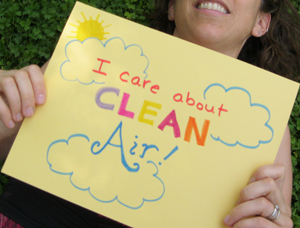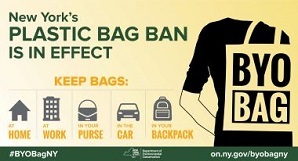Saving Energy, Transport Update – Air Mail! Newsletter
The New York State Department of Environmental Conservation sent this bulletin on 11/20/2020 11:00 AM EST |
| DEC Delivers - Information to keep you connected and informed from the NYS Department of Environmental Conservation |
| Share or view as a web page || Update preferences or unsubscribe |
This Month's Topics: |
Public & Stakeholder Participation Information:
Additional information and access to past announcements are on our Public & Stakeholder Participation Information page. Air Mail! is the publication to announce public and stakeholder information about air quality topics. All NYS residents are environmental stakeholders – we welcome anyone to join the information sessions and other opportunities posted here. The Changing Winds of Air PollutionAir pollution sources can affect more than just their immediate surroundings. Known as interstate transport, pollution can travel quickly from one state to another with natural weather patterns. NYS is affected by this pollution because we are downwind from pollution sources in mid-Atlantic and Midwestern states. Although NYS has some of the strictest air quality regulations in the country, pollutants such as nitrogen oxides (NOx) and volatile organic compounds (VOCs) can travel to us from these upwind states. NOx and VOCs are harmful to both people and the environment as they are known to cause respiratory problems, such as asthma, and contribute to ozone formation. In October 2020, EPA proposed the revised Cross-State Air Pollution Rule (CSAPR) to address interstate transport. This rule would require more emissions reductions of NOx from power plants in 12 states, including NY. EPA is accepting comments on the proposed updates through December 14, 2020. Remember that we’re all in this together when it comes to keeping our air clean! Photo caption: Air pollution from all kinds of sources, including power plants and cars, can be blown across state borders with the weather. Keep in mind that your actions can affect our neighboring states’ air quality as well. Energy Saving TipsStaying warm through the fall and winter can be tough, not only on the wallet but also on the environment. Winter home heating increases energy demands on power plants, household boilers, and furnaces, making them work harder and emit more air pollution. Follow these tips to stay warm, and keep our air clean this season:
By using these energy saving tips at home, you are reducing emissions that pollute our air while saving money. This winter, remember that your actions, big or small, significantly benefit air quality. Photo caption: Lowering your home temperature is an easy way to save money and energy. Each degree lower until about 60⁰F can save you money. A Bit of Air History: Clean Air Act Amendments of 1990Just 30 years ago, the 1990 Clean Air Act Amendments were signed into law. This amendment spearheaded efforts to decrease acid rain, urban air pollution, and toxic air emissions. It created a national permitting program, strengthened compliance, phased out ozone-depleting chemicals, and addressed toxic air pollutants' accidental releases. The 1990 Amendments also allowed states to adopt Ultimately, the Clean Air Act Amendments of 1990 helped create a healthy and productive environment that facilitated economic growth and sound environmental policies. Thanks, in part, to these Amendments, NY’s air is much cleaner now than it was when the Clean Air Act of 1970 was passed into law 50 years ago. Let’s continue to do our part to keep our air clean, NY! Did You Switch to Reusable Bags?If you wondered why you do not see plastic bags at store checkout counters anymore, NY’s plastic bag ban is back as of October 19, 2020. The Bag Waste Reduction Law, a ban on most plastic carryout bags, initially went into effect on March 1, but was suspended for a time as per an agreement reached in NYS Supreme Court. DEC has encouraged New Yorkers to use reusable bags wherever and whenever they shop with the #BYOBagNY(Bring Your Own Bag) campaign.
Reusable bags are a more environmentally friendly option to these plastic bags. Not only do reusable bags, either fabric or plastic, decrease plastic waste and paper consumption, but they also help to reduce emissions, decrease water pollution, and help keep our environment litter-free. Let us all support this practice by carrying reusable bags on shopping trips. For additional information about the bag ban, as well as tips for keeping reusable bags clean, please visit DEC's website. Helpful Links:
Dates to Remember:
Stay Informed about Your Air QualityNYS' ozone season runs from April through September. DEC publishes ground-level ozone forecasts during ozone season and particulate matter pollution forecasts year-round using a scale called the Air Quality Index (AQI). DEC sends out an air quality alert when there is a high AQI value, which indicates polluted air. Individuals with pre-existing respiratory or cardiovascular conditions, and people who exercise outdoors should take caution during an air quality alert. Find out if an Air Quality Alert is in effect by calling the toll-free Ozone Hotline: 1-800-535-1345. The AQI can be accessed in three ways:
We would like to know what you think. Please send your Air Mail! questions or comments to us at DAR.web@dec.ny.gov. |



 Keep the heat in: Insulate your attic, walls, and under floors to reduce heat loss. Replace old weather strips, and seal off drafty windows and ductwork, if needed.
Keep the heat in: Insulate your attic, walls, and under floors to reduce heat loss. Replace old weather strips, and seal off drafty windows and ductwork, if needed. California’s motor vehicle emission standards, which New York and several other states opted for, resulting in much cleaner cars.
California’s motor vehicle emission standards, which New York and several other states opted for, resulting in much cleaner cars. Of an estimated 23 billion plastic bags that New Yorkers use annually, 85 percent of them are discarded. They blow around in streets, get stuck in trees, and litter waterways, posing a threat to animals. Not only that, activities involved in manufacturing, shipping, and incinerating these plastic bags produces a significant amount of emissions, polluting our air.
Of an estimated 23 billion plastic bags that New Yorkers use annually, 85 percent of them are discarded. They blow around in streets, get stuck in trees, and litter waterways, posing a threat to animals. Not only that, activities involved in manufacturing, shipping, and incinerating these plastic bags produces a significant amount of emissions, polluting our air.